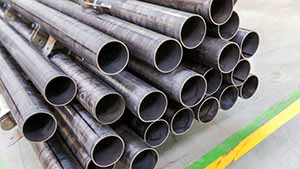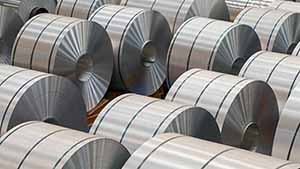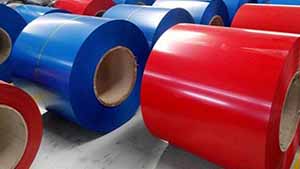Stainless Steel Sheet
Product Introduction of Stainless Steel Sheet
Stainless steel sheet is alloy steel with a smooth surface, high weldability, corrosion resistance, polishability, heat resistance, corrosion resistance, and so on. Widely used in all walks of life, it is an important material for modern industry. Stainless Steel Sheet is divided into austenitic Stainless Steel Sheet, ferritic stainless steel, martensitic stainless steel, duplex stainless steel according to the tissue state.
Shand Baowu Steel Group. Offer Stainless Steel Plate In Various Thicknesses, Standard Cut Lengths. Provide Custom.
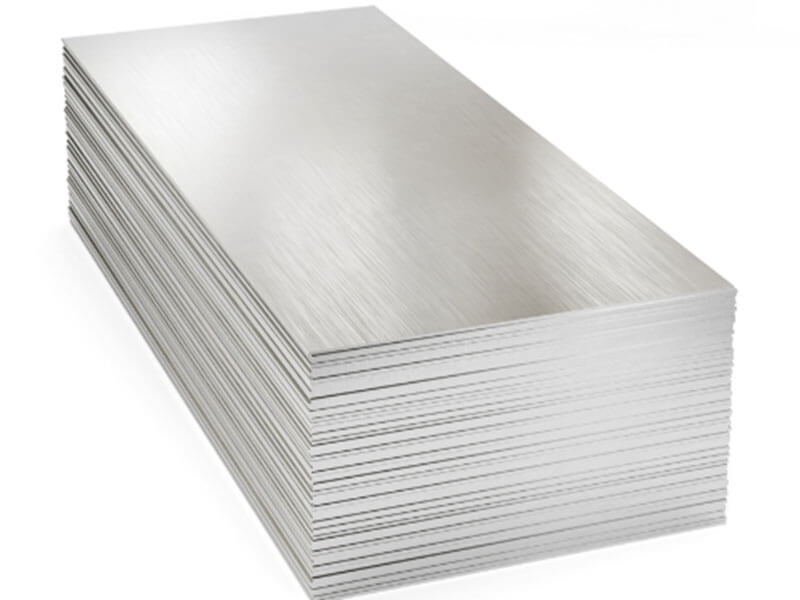
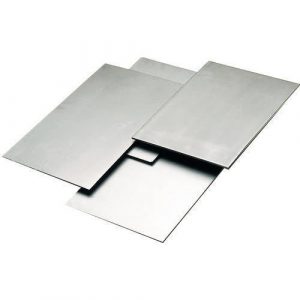
Stainless Steel Plate/Sheet
Cold Rolled Steel Plate Stainless Steel Plate/Sheet Code:STAINLESS STEEL Series:stainless steel Spec:Stainless Steel Material:201, 202, 301, 302, 303, 304, 304L, 304H, 310S, 316, 316L, 317L, 321,310S
Stainless Steel Sheet Available Specification
Material | 200 300 400 Series stainless steel |
Grade | 201 202 301 303 304 304L 309 309S 310 310S 316 316L 316Ti 317L 321 2205 2507 409 409l 410 410S 420 420J1 420J2 430 441 444 904L |
Standard | AiSi ASTM JIS DIN EN BS |
Tech | cold rolled / hot rolled |
Thickness | Hot rolled: 3mm-16mm 16-150mm Normal: 3.0 4.0 5.0 6.0 8.0 10.0 12.0 14.0 16.0 As per customer’s request: 16-150mm Cold rolled: 0.3-6mm Normal:0.3/0.4/0.5/0.6/0.7/0.8/0.9/1.0/1.2/1.5/2.0/2.5/3.0 As per customer’s request: 4.0/5.0/6.0 |
Width&Length | 1000mm-6000mm, or as per customer’s request Hot rolled: 1250*3000mm (4.1*10ft) 1500*3000mm (5*10ft) 1250*6000mm (4.1*19.6ft) 1500*6000mm (5*19.6ft) 1800*6000mm (5.9*19.6ft) 2000*6000mm(6.5*19.6ft) Cold rolled: 1000*2000mm (3.2*6.5ft) 1219*2438mm (4*8ft) 1500*3000mm (5*10ft) 1800 available 2000 available |
Place of Origin | China |
Processing Service | Bending, Welding, Recoiling, Punching, Cutting |
Tolerance | ±1% |
Surface Treatment | N0.1,2B,BA,6K, 8K, 12k, N0.4, HL, Mirrored,checkered etc |
Payment | T/T terms, 30% pre-payment, 70% balance see B/L copy |
Delivery Time | 5-15 days for ordinary orders (standard orders ≦50 ton); specified orders needs final confirmation as per customer’s request |
Standard: AiSi ASTM JIS DIN EN BS
Certification: SGS, ISO, ROHS
Type: cold rolled / hot rolled
Thickness: Hot rolled: 3mm-16mm 16-150mm ; As per customer’s request: 16-150mm ;Cold rolled: 0.3-6mm ; As per customer’s request: 4.0/5.0/6.0
Width: 1000mm-6000mm, or as per customer’s request; Hot rolled: 1250*3000mm (4.1*10ft) 1500*3000mm (5*10ft) ;1250*6000mm (4.1*19.6ft) 1500*6000mm (5*19.6ft) ; 1800*6000mm (5.9*19.6ft) 2000*6000mm(6.5*19.6ft) ;Cold rolled: 1000*2000mm (3.2*6.5ft) 1219*2438mm (4*8ft);1500*3000mm (5*10ft);1800 available 2000 available
Length: 1000-6000mm (Customized sizes are accepted)
Surface Treatment:N0.1,2B,BA,6K, 8K, 12k, N0.4, HL, Mirrored,checkered etc
Payment:T/T terms, 30% pre-payment, 70% balance see B/L copy
Delivery Time:5-15 days for ordinary orders (standard orders ≦50 ton); specified orders needs final confirmation as per customer’s request
Stainless Steel Sheet Surface
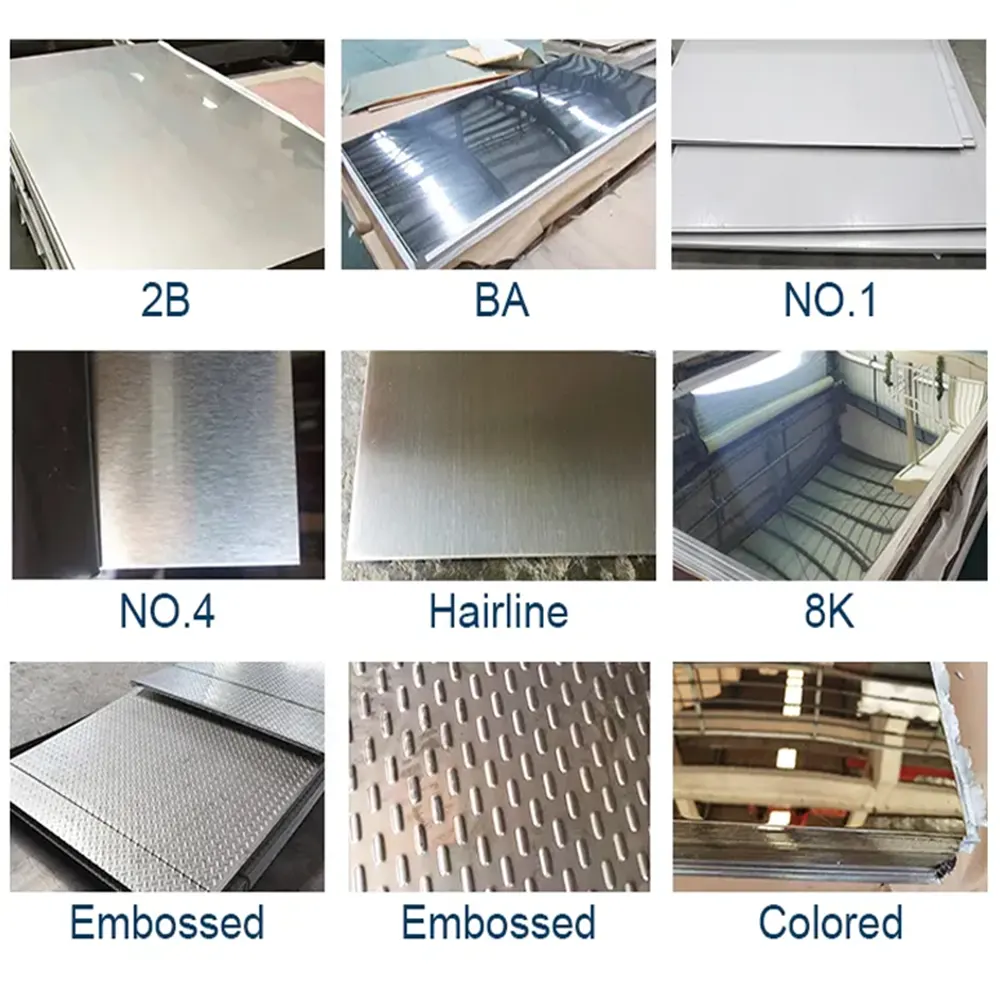
Surface Finished | Characteristics | application | ||
NO.1 | Finished by hot-rolling, smoother and pickling, characterized by white pickled surface. | Chemical industry equipment, Industrial tanks. | ||
2B | Finished by anneal treatment, pickling after cold rolling, followed by skin pass line to more brighter and smoother surface. | General application medical instruments, Tableware. | ||
BA | Bright anneal treatment after cold rolling. | Kichen utenstil, Kitchen ware,Architectural purpose. | ||
NO.4(Satin) | Finished by incontinuous linear brushing | Architecture,industries,Escalators, Kitchen ware, Vehicles. | ||
Hairline | Finished by continuous linear brushing | Architecture,industries,Escalators, Kitchen ware, Vehicles. | ||
8K(mirror) | A mirror-like reflective surface by polishing with finer abrasives over 800 mesh. | Refletor, Mirror, Interior- Exterior decoration for building. | ||
Baowu Product Catalog
Leading Steel Products Manufacturer From China
Company Profile
Shandong Baowu Steel Group Co., Ltd. located in Shandong, we have convenient transportation.our company is a large-scale enterprise specializing in the production of seamless steel pipes, welded steel pipes, stainless steel pipes and stainless steel products. We mainly produce including stainless steel plates/coils and profiles, Steel plate, alloy steel plate, wear-resistant steel plate,Carbon plate, square tube, galvanized tube, non-ferrous metal, PPGI and PPGL and other materials. Our company also has cooperative factories, like TPCO, TISCO, ZPSS, Tianjin Iron and Steel Group, HBIS Group, and Steel, Shandong Iron and Steel Group.We have rich experience in foreign trade and have established long-term cooperative relations with many well-known foreign companies.

Application of stainless steel plate
Stainless steel sheets are important application materials in many fields. Its products have excellent performance in all aspects and a long service life. It has been widely used in machinery manufacturing, construction engineering, kitchen utensils manufacturing, rail vehicles and other industries.

Packaging and Shipping of Stainless Steel Plates

Questions:
Stainless steel is usually divided into martensitic steel, ferritic steel, austenitic steel, austenitic-ferritic (duplex) stainless steel, and precipitation hardening stainless steel. In addition, it can also be divided into chromium stainless steel, chromium-nickel stainless steel, and chromium-manganese-nitrogen stainless steel. There are also stainless steel sheets and strip for pressure vessels (gb24511_2009 stainless steel sheet and strip for pressure equipment).
Ferritic stainless steel
The chromium content of 15% to 30%. Its corrosion resistance, toughness, and weldability increase with the chromium content, and its resistance to chloride stress corrosion is better than other types of stainless steel. Crl7, cr17mo2ti, Cr25, cr25mo3ti, Cr28, etc. all belong to this category. Ferritic stainless steel has good corrosion resistance and oxidation resistance due to the high chromium content, but the mechanical properties and process properties are poor. Mostly used for less stress acid-resistant structure and antioxidant steel. This steel can resist the corrosion of the atmosphere, nitric acid and brine solution has good high-temperature oxidation resistance and low coefficient of thermal expansion characteristics. Used for nitric acid and food plant equipment, but also to make high temperature working parts, such as gas turbine parts.
Austenitic stainless steel
The chromium content of more than 18%, also contains about 8% of nickel and a small amount of molybdenum, titanium, nitrogen, and other elements. Comprehensive performance, resistance to corrosion of various media. Commonly used austenitic stainless steel grades are 1Cr18Ni9, 0Cr19Ni9, etc. 0Cr19Ni9 steel Wc is less than 0.08%, the steel number marked “0”. This type of steel contains a large amount of nickel and chromium so that the steel is austenitic at room temperature. This steel has good plasticity, toughness, weldability, corrosion resistance, and non-magnetic or weak magnetic properties. It has good corrosion resistance in oxidizing and reducing media. Used in the manufacture of acid-resistant equipment, such as corrosion-resistant vessels and equipment. Lining, conveying pipes, nitric acid-resistant equipment parts, etc. It can also be used as the main material for stainless steel clock fittings. Austenitic stainless steel is generally solid solution treated, that is, the steel is heated to 1050 ~ 1150 ℃, and then water-cooled or air-cooled, to obtain a single-phase austenitic organization.
Austenitic-ferritic duplex stainless steel
It has the advantages of austenitic and ferritic stainless steel and has superplasticity. Austenitic and ferritic structures each account for about half of the stainless steel. In the case of low carbon content, the content of chromium (Cr) is between 18% and 28%, and the content of nickel (Ni) is between 3% and 10%. Some steels also contain Mo, Cu, Si, Nb, Ti, N, and other alloying elements. This type of steel has the characteristics of austenitic and ferritic stainless steel. Compared with ferritic, with higher plasticity and toughness, no room temperature brittleness, significantly improved resistance to intergranular corrosion and welding properties, while still maintaining the iron element stainless steel 475 ℃ brittleness, high thermal conductivity, and superplasticity. Compared with austenitic stainless steel, high strength, resistance to intergranular corrosion, and chloride stress corrosion are significantly improved. Duplex stainless steel has excellent resistance to pitting corrosion and is also nickel-saving stainless steel.
Precipitation hardening stainless steel
The matrix is austenitic or martensitic, and the commonly used precipitation-hardening stainless steel grades are 04Cr13Ni8Mo2Al, etc. Stainless steel can be hardened (strengthened) by precipitation hardening (also known as age hardening).
Martensitic stainless steel
High strength, but plasticity and weldability are poor. The common grades of martensitic stainless steel are 1Cr13, 3Cr13, etc. Because of the high carbon content, it has high strength, hardness, and wear resistance, but slightly poorer corrosion resistance. It is used for higher mechanical properties and corrosion resistance. Some general parts are needed, such as springs, turbine blades, hydraulic valves, etc. This type of steel is used after quenching. Annealing is required after forging and stamping. Stainless steel plate and strip for pressure equipment.
Pressure vessels with special stainless steel for their classification and code, size, shape and allowable deviation, technical requirements, test methods, inspection rules, packaging, marking, and product quality certificate have clear requirements. Commonly used grades are 06Cr19Ni10, 022Cr17Ni12Mo2. digital codes are S30408, S31603, etc., mainly used in food machinery, pharmaceutical machinery, and other sanitary equipment.
Stainless steel is usually divided into martensitic steel, ferritic steel, austenitic steel, austenitic-ferritic (duplex) stainless steel, and precipitation hardening stainless steel. In addition, it can also be divided into chromium stainless steel, chromium-nickel stainless steel, and chromium-manganese-nitrogen stainless steel. There are also stainless steel sheets and strip for pressure vessels (gb24511_2009 stainless steel sheet and strip for pressure equipment).
Ferritic stainless steel
The chromium content of 15% to 30%. Its corrosion resistance, toughness, and weldability increase with the chromium content, and its resistance to chloride stress corrosion is better than other types of stainless steel. Crl7, cr17mo2ti, Cr25, cr25mo3ti, Cr28, etc. all belong to this category. Ferritic stainless steel has good corrosion resistance and oxidation resistance due to the high chromium content, but the mechanical properties and process properties are poor. Mostly used for less stress acid-resistant structure and antioxidant steel. This steel can resist the corrosion of the atmosphere, nitric acid and brine solution has good high-temperature oxidation resistance and low coefficient of thermal expansion characteristics. Used for nitric acid and food plant equipment, but also to make high temperature working parts, such as gas turbine parts.
Austenitic stainless steel
The chromium content of more than 18%, also contains about 8% of nickel and a small amount of molybdenum, titanium, nitrogen, and other elements. Comprehensive performance, resistance to corrosion of various media. Commonly used austenitic stainless steel grades are 1Cr18Ni9, 0Cr19Ni9, etc. 0Cr19Ni9 steel Wc is less than 0.08%, the steel number marked “0”. This type of steel contains a large amount of nickel and chromium so that the steel is austenitic at room temperature. This steel has good plasticity, toughness, weldability, corrosion resistance, and non-magnetic or weak magnetic properties. It has good corrosion resistance in oxidizing and reducing media. Used in the manufacture of acid-resistant equipment, such as corrosion-resistant vessels and equipment. Lining, conveying pipes, nitric acid-resistant equipment parts, etc. It can also be used as the main material for stainless steel clock fittings. Austenitic stainless steel is generally solid solution treated, that is, the steel is heated to 1050 ~ 1150 ℃, and then water-cooled or air-cooled, to obtain a single-phase austenitic organization.
Austenitic-ferritic duplex stainless steel
It has the advantages of austenitic and ferritic stainless steel and has superplasticity. Austenitic and ferritic structures each account for about half of the stainless steel. In the case of low carbon content, the content of chromium (Cr) is between 18% and 28%, and the content of nickel (Ni) is between 3% and 10%. Some steels also contain Mo, Cu, Si, Nb, Ti, N, and other alloying elements. This type of steel has the characteristics of austenitic and ferritic stainless steel. Compared with ferritic, with higher plasticity and toughness, no room temperature brittleness, significantly improved resistance to intergranular corrosion and welding properties, while still maintaining the iron element stainless steel 475 ℃ brittleness, high thermal conductivity, and superplasticity. Compared with austenitic stainless steel, high strength, resistance to intergranular corrosion, and chloride stress corrosion are significantly improved. Duplex stainless steel has excellent resistance to pitting corrosion and is also nickel-saving stainless steel.
Precipitation hardening stainless steel
The matrix is austenitic or martensitic, and the commonly used precipitation-hardening stainless steel grades are 04Cr13Ni8Mo2Al, etc. Stainless steel can be hardened (strengthened) by precipitation hardening (also known as age hardening).
Martensitic stainless steel
High strength, but plasticity and weldability are poor. The common grades of martensitic stainless steel are 1Cr13, 3Cr13, etc. Because of the high carbon content, it has high strength, hardness, and wear resistance, but slightly poorer corrosion resistance. It is used for higher mechanical properties and corrosion resistance. Some general parts are needed, such as springs, turbine blades, hydraulic valves, etc. This type of steel is used after quenching. Annealing is required after forging and stamping. Stainless steel plate and strip for pressure equipment
Pressure vessels with special stainless steel for their classification and code, size, shape and allowable deviation, technical requirements, test methods, inspection rules, packaging, marking, and product quality certificate have clear requirements. Commonly used grades are 06Cr19Ni10, 022Cr17Ni12Mo2. digital codes are S30408, S31603, etc., mainly used in food machinery, pharmaceutical machinery, and other sanitary equipment.
The corrosion resistance of stainless steel decreases as the carbon content increases. Therefore, most stainless steels have a low carbon content, up to 1.2%, while some steels have a low carbon content, ωC (carbon content) even below 0.03% (e.g. 00Cr12). The main alloying element in stainless steel is Cr (chromium). Only when the Cr content reaches a certain value, the steel has corrosion resistance. Therefore, the general stainless steel Cr (chromium) content of at least 10.5%. Stainless steel also contains Ni, Ti, Mn, N, Nb, Mo, Si, Cu, and other elements.
As the use of each product is different, the processing process and quality requirements of raw materials are different. In general, different stainless steel products have different thickness tolerances for raw materials. For example, the thickness tolerance of the second type of tableware and insulation cups is generally higher, -3 to 5%, while the thickness tolerance of the first type of tableware generally requires -5%, steel pipe class requires -10%, hotel cooler material thickness tolerance requirements of -8%, dealers generally require thickness tolerance between -4% and 6%. At the same time, the product’s domestic and foreign sales differences will also lead to different customer requirements for the thickness tolerance of raw materials. General export products customers require higher thickness tolerance, while domestic sales enterprises require relatively low thickness tolerance (mainly due to cost considerations), some customers even require -15%.
DDQ (deep punching quality) material:
refers to the material used for deep punching (punching) purposes, which is what we call soft material. The main feature of this material is a higher elongation (≧ 53%) and higher hardness. Low (≤ 170%), internal grain size between 7.0 to 8.0, deep punching performance is excellent. Many companies producing insulated bottles and jugs generally have a relatively high product processing ratio (BLANKING SIZE/product diameter), the processing ratio of 3.0, 1.96, 2.13, 1.98. SUS304DDQ material is mainly used for these products with high requirements for processing ratio. Of course, products with processing ratios over 2.0 generally require several passes of stretching to complete. If you can not achieve raw material extension, the product is prone to cracking and pulling through when processing deep-drawn products, affecting the finished product qualification rate, and of course, increasing the cost of manufacturers.
General purpose materials:
mainly used for materials other than DDQ applications. This material is characterized by lower elongation (≧ 45%), higher hardness (≦ 180HB), internal grain size grade 8.0 ~ 9.0 Compared with the DDQ material, its deep-drawing performance is poor. It is mainly used for products that can be obtained without stretching, such as spoons, ladles, forks, electrical appliances, steel pipes, etc. However, it has an advantage over DDQ material in that BQ performance is relatively better, mainly due to its slightly higher hardness.
Stainless steel plate is an inexpensive material, but customers demand very high surface quality. The stainless steel plate will inevitably have various defects such as scratches, pits, sand holes, dark lines, creases, and contamination in the production process. Therefore, the surface quality of stainless steel plates, such as scratches, creases, etc., belongs to high-grade materials. This is not allowed, in spoons, spoons, forks and the production process is not allowed to have defects such as pockmarks, sand holes, because it is difficult to throw them away in the polishing process. The quality grade of the table needs to be determined according to the degree and frequency of various defects on the surface to determine the product grade.
Most of the user requirements are to maintain the original appearance of the building for a long time. In determining the type of stainless steel to be selected, the main considerations are the aesthetic standards required, the corrosiveness of the local atmosphere, and the cleaning system to be used. However, other applications are increasingly seeking structural integrity or impermeability. Examples include roofs and sidewalls of industrial buildings. In these applications, the cost of construction to the owner may be more important than aesthetics, and the surface may not be very clean.
The use of 304 stainless steel works quite well in dry interior environments.
However, if it is to maintain its appearance outdoors in rural and urban areas, it will require frequent cleaning. In heavily polluted industrial and coastal areas, the surface can be very dirty and even rusty. However, nickel-containing stainless steel is needed to obtain aesthetic results in outdoor environments. Therefore, 304 stainless steel is widely used in curtain walls, sidewalls, roofs, and other buildings. However, 316 stainless steel is best suited for use in highly corrosive industries or marine environments. There are several design standards, including 304 and 316 stainless steel. The “duplex” stainless steel 2205 is also included in European standards due to its combination of good atmospheric corrosion resistance, high tensile strength, and elastic ultimate strength.
Product shape
In fact, stainless steel is manufactured into the full range of standard metal shapes and sizes, as well as many special shapes. The most commonly used products are thin plates and strips, medium-thick plates are also used to produce special products, such as the production of hot-rolled structural steel and extruded structural steel. There are also products in the form of round, oval, square, rectangular, hexagonal welded, or seamless steel pipes, including profiles, bars, wire, castings, etc. Many different commercial finishes have been developed to meet the aesthetic requirements of architects.
3D printing field
Stainless steel itself has good corrosion resistance, and stainless steel retains its excellent physical and mechanical properties at high temperatures. It is also widely used in the field of 3D printing.
1, weldability: different product uses have different requirements for welding performance. A class of tableware generally does not require weldability, even including some cookware companies. But most products require raw materials with good weldabilities, such as secondary tableware, insulation cups, steel pipes, water heaters, water dispensers, etc.
2, corrosion resistance: most stainless steel products require good corrosion resistance, such as Class I or Class II tableware, kitchenware, water heaters, water dispensers, etc.
3, polishing performance: In today’s society, stainless steel products in the production process are generally subject to the polishing process, only a few products such as water heaters, drinking fountains do not need polishing. Therefore, this requires raw materials with good polishing performance.
4, heat resistance: heat resistance refers to the stainless steel at high temperatures that can still maintain its excellent physical and mechanical properties.
5, corrosion resistance: When the number of chromium atoms in steel is not less than 12.5%, it can make a sudden change in the electrode potential of steel, from negative to positive electrode potential. Prevent electrochemical corrosion.
1.The need for pre-treatment
Pretreatment is an important treatment step before the surface of stainless steel parts enters the surface treatment (including pickling, chemical polishing, and electrochemical polishing, electroplating, passivation, blackening, coloring, chemical treatment, etc.). During the forming process of stainless steel parts, the surface may stick to oil stains, burrs, rough surfaces, and oxides. Therefore, the oil, burrs, uneven surfaces, and oxides must be removed before the surface treatment can be carried out to give satisfactory results in the subsequent treatment.
2. Treatment of removed dirt
Stainless steel surface pretreatment to remove the dirt can be divided into two categories of organic and inorganic substances.
(1) organic dirt. Including mineral oil (such as diesel, motor oil, petroleum jelly, paraffin, etc.) and animal and vegetable oils (such as soybean oil, camellia oil, rapeseed oil, lard, butter, etc.). These oil stains are mainly from the stainless steel zero cattle processing process used in the lubricant, cutting oil, quenching oil, polishing paste and polishing paste, fingerprints.
(2) inorganic dirt. Including dirt, dust particles, oxides, and other contaminants generated during the heat treatment process.
3, the pretreatment steps of stainless steel parts
(1) Surface mechanical leveling. Eliminate the roughness of the stainless steel surface, through mechanical polishing and polishing to achieve a surface finish.
(2) Degreasing. Remove surface oil stains.
(3) Acid washing. Removal of surface oxides.
(4) Weak corrosion. Activate the surface to be treated, remove the surface passivation film, revealing the metal crystal structure.
4、Stainless steel surface pretreatment methods
(1) mechanical law. Use polishing machines, polishing machines, or other machinery to remove the rough surface of the coating and polishing and polishing.
(2) Chemical method. Degreasing with alkaline solutions, acidic solutions for pickling, organic solvents to dissolve grease, and decontamination.
(3) Electrochemical method. The application of electrochemical degreasing and electrochemical etching.
(4) Tumbling, centrifugal tumbling, centrifugal disc polishing, and rotary polishing for small parts with leveling and descaling.
(5) Sandblasting. Suitable for large area treatment, with decontamination and removal of oxide skin function.
Galvanized sheet is rust-resistant, while Stainless Steel Sheet is resistant to weakly corrosive media such as air, steam, and water.
As the name implies, the galvanized sheet is coated with a layer of 80-120 grams of zinc on an iron sheet in the form of a snowflake. Stainless steel sheet is whiter and brighter than the galvanized sheet. The material is softer than a galvanized sheet. Galvanized sheet is mainly for aesthetic purposes and does not rust.
The main characteristic of stainless steel is that it does not rust.
Galvanized sheet is a layer of metallic zinc plated on an iron sheet to provide corrosion protection. There are cold plating and hot plating. In short, the zinc on the surface will be lost over time, and the iron will be corroded. Stainless steel does not need to be corrosion resistant and is expensive. Only some special materials of stainless steel are tempered at a low temperature of 200-300℃, but the temperature is too low and generally does not change much. The zinc under the galvanized sheet will be slowly baked off at high temperatures (200°C, 300°C). There are many types of stainless steel. Galvanized sheet is just metallic zinc plated on the surface of steel or iron. Galvanized sheet itself is an ordinary sheet with surface treatment only.
Stainless steel plate is a thick blessed acid-resistant alloy plate.
200-300 ℃ is not considered high temperature. A relatively cheap 430 stainless steel plate should be twice as expensive as a galvanized plate of the same specification. Stainless steel by adding trace elements to achieve the purpose of changing the composition of the steel to achieve anti-corrosion function. Galvanized sheet is galvanized on the surface of ordinary steel sheets to achieve corrosion protection by sacrificing zinc. 200°C and 300°C are not a problem for the metal. Depending on the surrounding atmosphere, there is some minimal effect, but it takes a long time to change.
1. Density
Carbon steel has a slightly higher density than ferritic and martensitic stainless steels and slightly lower than austenitic stainless steels.
2. Resistivity
Resistivity in the order of carbon steel, ferrite, martensitic and austenitic stainless steels.
3. linear expansion coefficient in a similar order, with austenitic stainless steel being the highest and carbon steel the lowest.
4, carbon steel, ferritic, martensitic stainless steel is magnetic, austenitic stainless steel is not magnetic, but the cold working hardening will produce magnetic, the formation of martensitic phase change. Heat treatment can be used to eliminate this martensite. The tissue returns to its non-magnetic properties.
Compared with carbon steel, austenitic stainless steel has the following characteristics.
1) High resistivity, about five times that of carbon steel.
(2) Large coefficient of linear expansion, 40% larger than carbon steel, with the temperature increases, the value of the coefficient of linear expansion also increases accordingly.
(3) low thermal conductivity, about 1/3 of the carbon steel.
FAQ
We are a factory as well as a professional manufacturer established for more than 20 years and export over 15 years.
Can provide small samples for free. Customized sample takes 5-7 days.
Small trial order takes 5-7 days. Container order need 15-20 days.
Cover with PE film , wrap with waterproof paper, pack with wooden plate,belt by steel strip, fasten on pallet.
All products we supply is primary as you need, Our company is certificated to CE, and every product will be tested for 4-5processes. We welcome customers or the third party inspection agencies to come to our factory for inspection.
Usually 30% deposit by TT in advance and balance against copy pf BL or L/C at sight.
Hot Products
Share to:



